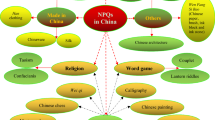Abstract
Healthy nutrition requires to notice risk element content of daily ingested foods and beverages. Several tea types are frequently consumed beverages in daily routine and social situations. Carbonate, although it is not in the natural ingredients of tea, can be added to maintain more brew. Also it gives brilliant red colour while reducing the brewing cost. For this respect, in this study, carbonate added infusions of some black teas (black, earl grey and green tea), herbal teas (fennel, mint and sage tea) and fruit teas (apple, lemon and rosehip) was investigated by inductively coupled plasma optical emission spectrometer (ICP-OES) for the determination of carbonate addition to the risk element (Al, As, Ba, Cd, Mo, Pb, Sb and Ti) contents of teas. Also, the microwave digestion analysis applied by dissolving tea powders in acid solution was conducted in order to investigate how much risk element transfer to the brew. Prior to microwave digestion process, the total risk element contents of the tea grains were determined by again ICP-OES. Furthermore, health risk assessment studies including non-carcinogenic and carcinogenic risks were conducted. According to the health risk assessment results of 200 mL daily consumed teas, hazard index (HI) was found less than 1 and target carcinogenic risk (TCR) was determined as less than 1 × 10–4 which shows all selected tea samples are in the low risk group.
Similar content being viewed by others
Data availability
All data generated or analyzed during this study are included in this published article.
Code availability
Not applicable.
References
Antoine JMR, Hoo Fung LA, Grant CN (2017) Assessment of the potential health risks associated with the aluminium, arsenic, cadmium and lead content in selected fruits and vegetables grown in Jamaica. Tox Reports 4:181–187. https://doi.org/10.1016/j.toxrep.2017.03.006
Demir F, Kipcak AS, Ozdemir OD, Derun EM (2020) Determination of essential and non-essential element concentrations and health risk assessment of some commercial fruit juices in Turkey. J Food Sci & Tech 57(12):4432–4442. https://doi.org/10.1007/s13197-020-04480-9
Derun EM (2014) Determination of Essential Mineral Concentrations in Some Turkish Teas and the Effect of Lemon Addition. Food Sci Biotech 23(3):671–675. https://doi.org/10.1007/s10068-014-0091-7
Desideri D, Meli MA, Roselli C, Feduzi L (2011) Polarized X ray fluorescence spectrometer (EDPXRF) for the determination of essential and non essential elements in tea. Microchem J 98:186–189. https://doi.org/10.1016/j.microc.2011.01.008
Długaszek M, Kaszczuk M (2020) Assessment of the nutritional value of various teas infusions in terms of the macro- and trace elements content. J Trace El Med Bio 59:126428. https://doi.org/10.1016/j.jtemb.2019.126428
Gorgulu TY, Ozdemir OD, Kipcak AS, Piskin MB, Derun EM (2016) The effect of lemon on the essential element concentrations of herbal and fruit teas. Appl Bio Chem 59:425. https://doi.org/10.1007/s13765-016-0161-z
Gorgulu TY, Kipcak AS, Ozdemir OD, Derun EM, Piskin S (2014) Examination of the lemon effect on risk elements concentrations in herbal and fruit teas. Cz J Food Sci 32(6):555–562
Guo W, Wang R, Wang W, Peng Y (2020) Rapid determination of toxic and rare-earth elements in teas by particle nebulization-ICPMS. J Food Comp Anly 91:103517. https://doi.org/10.1016/j.jfca.2020.103517
Jabeen S, Alam S, Saleem M, Ahmad W, Bibi R, Hamid FS, Shah HU (2015) Withering timings affect the total free amino acids and mineral contents of tea leaves during black tea manufacturing. Ara J Chem 12:2411–2417. https://doi.org/10.1016/j.arabjc.2015.03.011
Kim K, Melough MM, Vance TM, Noh H, Koo SI, Chun OK (2018) Dietary cadmium intake and sources in the US. Nutrients 11:2. https://doi.org/10.3390/nu11010002
Kolackova T, Sumczynski D, Bednarík V, Vinter S, Orsavova J, Kolofikova K (2021) Mineral and trace element composition after digestion and leaching into matcha ice tea infusions (Camellia sinensis L.). J Food Comp Anly 97:103792. https://doi.org/10.1016/j.jfca.2020.103792
McKenzie JS, Jurado JM, Pablos F (2010) Characterisation of tea leaves according to their total mineral content by means of probabilistic neural networks. Food Chem 123:859–864. https://doi.org/10.1016/j.foodchem.2010.05.007
Meng L, Chen X, Chen X, Yuan L, Shi W, Cai Q, Huang G (2020) Linear and nonlinear classification models for tea grade identification based on the elemental profile. Micro J 153:104512. https://doi.org/10.1016/j.microc.2019.104512
Milani RF, Silvestre LK, Morgano MA, Cadore S (2019) Investigation of twelve trace elements in herbal tea commercialized in Brazil. J Trace El Med Bio 52:111–117. https://doi.org/10.1016/j.jtemb.2018.12.004
Ozdemir OD, Kipcak AS, Derun EM, Piskin S (2014) Determination of the effect of lemon addition upon element concentrations in tea. Ins Sci Tech 42:153–160. https://doi.org/10.1080/10739149.2013.845847
Rolfes SR, Pinna K, Whitney E (2008) Understanding normal and clinical nutrition, 8th edn. Wadsworth Publishing, USA
Storelli MM (2008) Potential human health risks from metals (Hg, Cd, and Pb) and polychlorinated biphenyls (PCBs) via seafood consumption: estimation of target hazard quotients (THQs) and toxic equivalents (TEQs). Food Chem Tox 46(8):2782–2788. https://doi.org/10.1016/j.fct.2008.05.011
Yokel RA, Florence RL (2008) Aluminum bioavailability from tea infusion. Food Chem Tox 46(12):3659–3663. https://doi.org/10.1016/j.fct.2008.09.041
Zhang J, Yang R, Chen R, Peng Y, Wen X, Gao L (2017) Accumulation of heavy metals in tea leaves and potential health risk assessment: a case study from Puan County, Guizhou Province, China. Int J Env Res Pub Health 15:133. https://doi.org/10.3390/ijerph15010133
Acknowledgements
The authors wish to thank all who assisted in conducting this work.
Funding
This work was supported by the Yildiz Technical University Scientific Research Projects Coordination Department, Project Number: 2013–07-01-KAP03”.
Author information
Authors and Affiliations
Contributions
TYG carried out the experiments, DU analyzed the data and wrote the MS, ASK conceived, carried out the experiments and wrote the MS, EMD supervised the work and edited the manuscript.
Corresponding author
Ethics declarations
Conflict of interest
The author declares that they have no conflict of interest.
Consent to participate
Not applicable.
Consent for publication
Not applicable.
Ethics approval
Not applicable.
Additional information
Publisher's Note
Springer Nature remains neutral with regard to jurisdictional claims in published maps and institutional affiliations.
Rights and permissions
About this article
Cite this article
Yalcin Gorgulu, T., Uygunoz, D., Kipcak, A.S. et al. Investigation of carbonate addition on risk element concentrations in various teas. J Food Sci Technol 59, 3540–3547 (2022). https://doi.org/10.1007/s13197-021-05348-2
Revised:
Accepted:
Published:
Issue Date:
DOI: https://doi.org/10.1007/s13197-021-05348-2




